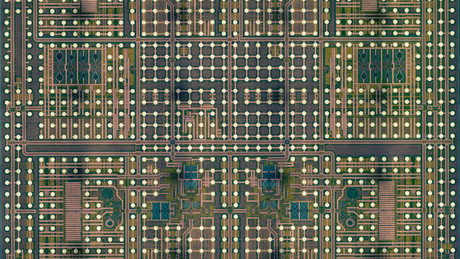MATRICs chip released by BAE Systems

BAE Systems engineers have developed a MATRICs (Microwave Array Technology for Reconfigurable Integrated Circuits) chip.
The chip is designed to address future requirements for communications, electronic warfare and signal intelligence systems, and can be easily reconfigured in the field.
“MATRICs is a radiofrequency toolbox on a chip,” said Greg Flewelling, a senior principal engineer at BAE Systems.
“It covers a broad range of radio waveforms so that many different types of systems can be designed around it, including ones that need wide spectrum awareness and adaptability to dynamic and challenging signal environments.”
MATRICs was developed and matured with funding from the Defense Advanced Research Projects Agency (DARPA), as part of its Adaptive RF Technology (ART) program. The ART program aims to advance the hardware used in radios that can reconfigure themselves under a range of environmental and operating conditions.
Because MATRICs operates over a very wide spectrum of radio signals, systems based on this chip can benefit from reduced size, weight and power (SWaP) without the long development cycles and expensive engineering costs typically associated with customised chips. The reduced SWaP of the MATRICs chip makes it suitable for critical applications, including unmanned aerial platforms and man-portable radios, where light weight and low power are at a premium. The MATRICs chip also allows engineers to create rapid prototypes and working systems that can be fielded faster and that can accelerate the speed of delivery for new technology.
The speed of delivery from concept to the field is a critical component of the US Department of Defense’s Third Offset Strategy, which has created a demand for agile systems that can efficiently address changing conditions in real time as new, advanced technologies emerge. The strategy also focuses on the need for accelerated development and the rapid fielding of new technology by modifying existing systems.
Fleet comms enhanced for Alaskan fishing company
Inrico has delivered a customised communication system to the company, addressing the unique...
ACMA releases latest five-year spectrum outlook
The ACMA has released its Five-year spectrum outlook (FYSO) 2025–30, providing an overview...
It is possible to beam up quantum signals, scientists find
Quantum satellites currently beam entangled particles of light from space down to ground stations...




